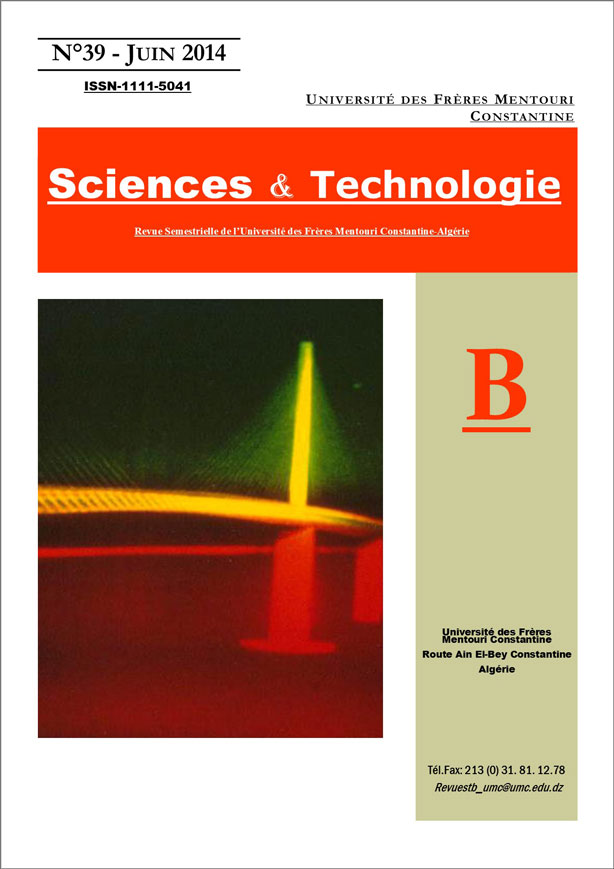MODELING INPUT DATA CLASSES OF THE BUILDING ENERGY SIMULATION PROGRAM ENERGY PLUS WITH SCENARIOS AND HIERARCHICAL COLORED PETRINETS
Mots-clés :
EnergyPlus, IDD File, Scenarios, UML, Colored Petri-netsRésumé
This paper addresses the problem of modeling input data classes of the input data dictionary (IDD) file of the Building energy simulation program EnergyPlus. Our endeavor is to provide an easy way for elaborating a behavior specifications of an interactive user interface intended for input data of the IDD file, using hierarchical colored Petri nets.
The modeling approach used in this work comprises two levels of abstraction: the use case level corresponding to the use case diagram model as defined in the unified modeling language (UML) and the scenario level as refinement of the former one. The color aspect of Petri-nets is used at the scenario level to preserve the independence of several scenarios after their integration.
The benefit of the approach consists in the structuring of the scenario acquisition and the approach of merging scenarios using composite color sets.
Références
J. Rumbaugh, J. Jacobson, G. Booch, The Unified Modeling Language, Reference Manual (Addison Wesley Inc., 1999).
I. Kriss, M. Ekoutbi, R.K. Keller, P.A. Muller, Automating the Synthesis of UML Statecharts Diagrams from Multiple Collaboration Diagrams, In Bezivin ed., UML 98 Springer, LNCS 1618, Beyond the Notation:132-147, 1999.
M. Elkoutbi, R.K. Keller, Modeling Interactive System with Hierarchical Colored Petri Nets, In Proc. of Adv. Simulation Technologies Conf., pp. 432-437, Boston M.A., Soc. Comp. Simulation Intl HPC98 Special Session on Petri-Nets, 1998.
S. Sialhir, Learning UML, (O’Reilly Edition, 2003).
L.M. Kristensen, Jorgensen, K. Jensen, Application of Colored Petri Nets in System Development, Springer-Verlag, In Lectures on Concurrency and Petri Nets- Advances in Petri Nets, Proc. of 4th Advanced Course on Petri Nets, Vol. 3098 of Lecture Notes in Computer Science: 626-685, 2004.
A. Bachkhaznadji, A. Belhamri, A Model Driven Application for HVAC Energy Simulation Data: EnerMDA, In Proc. of 3rd Mediterranean Congress of HVAC Engineering, Vol. 2, pp. 563-572, Climamed, Lyon France 20-21 November 2006.
EnergyPlus, version 3.0, app1.eere.energy.gov/building/energyplus/
P. Hsia, J. Samuel, J. Gao, D. Kung, Y. Toyoshima, C. Chen, Formal Approach to Scenario Analysis, IEEE Software, Vol. 11,(Issue 2): 33-41,1994.
K. Jensen, Colored Petri-Nets, Basic Concepts, Analysis Methods and Practical Use, Practical use, Springer-Verlag Vol. 3, 1997.
L. Liang, From Use Cases to Classes, A Way of Building Object Model with UML, Journal of Information and Software Technology, Vol.45: 83-93,2003.
I. Graham, Use Cases Combined with Booch/OMT/UML, Process and Products, Journal of Object Oriented Programming, 76-78, 1998.
M. Glinz, Statecharts for Requirements Specifications, As simple as Possible, as Rich as Needed. Position Paper in the ICSE 2002 Workshop: Scenarios and state machine models, algorithms, and tools, Orlando, Florida, USA. 2002.
M. Elkoutbi, , I. Khriss, R. K. Keller, Automated Prototyping of User Interface Based on UML Scenarios. Journal of Automated Engineering: 5-40, 2006.
M. Elkoutbi, R. K. Keller, User Interface Prototyping based on UML scenarios and High-level Petri-Nets. Paper presented at the 21st International Conference on ATPN, Springer-Verlag LNCS 1825, pp.166-186, Aarhur, Denmark, 2000.
CPN Tools version 2.2.0. Department of Computer Science, University of Aarhus 2006. Available at: http:// wiki.diami.au.dk/cpntools/.
Jensen, K. Colored Petri-nets, Basic Concepts, Analysis Methods and Practical use. Volume3: Practical use, Springer-Verlag. 1997.
Téléchargements
Publié
Numéro
Rubrique
Licence
Les auteurs publiant dans cette revue acceptent les termes suivants :- Les auteurs détiennent le droit d'auteurs et accordent à la revue
le droit de première publication, avec l’ouvrage disponible simultanément [SPÉCIFIER LA PÉRIODE DE TEMPS] après publication, sous la licence Licence d’attribution Creative Commons qui permet à d'autres de partager l'ouvrage en en reconnaissant la paternité et la publication initiale dans cette revue. - Les auteurs peuvent conclure des ententes contractuelles additionnelles et séparées pour la diffusion non exclusive de la version imprimée de l'ouvrage par la revue (par ex., le dépôt institutionnel ou la publication dans un livre), accompagné d'une mention reconnaissant sa publication initiale dans cette revue.
- Les auteurs ont le droit et sont encouragés à publier leur ouvrage en ligne (par ex., dans un dépôt institutionnel ou sur le site Web d'une institution) avant et pendant le processus de soumission, car cela peut mener à des échanges fructueux ainsi qu'à un nombre plus important, plus rapidement, de références à l’ouvrage publié (Consulter The Effect of Open Access).

